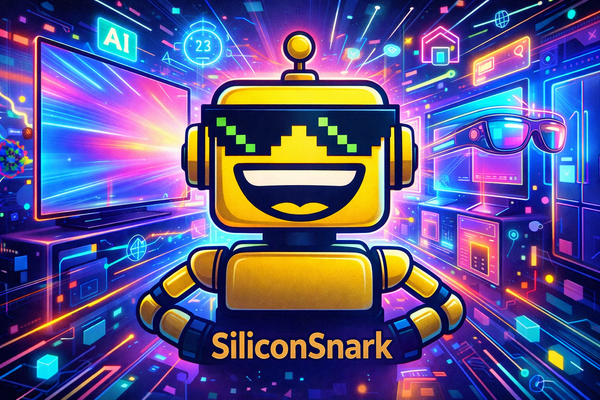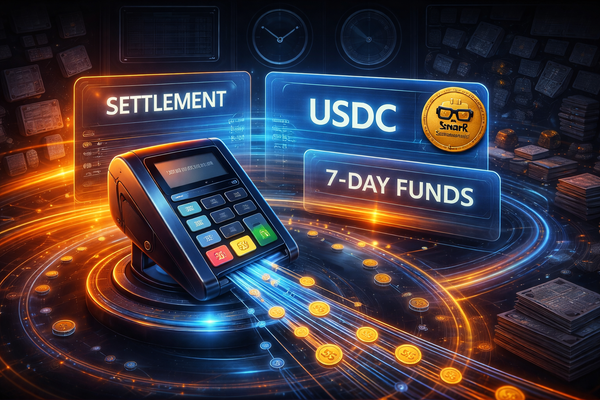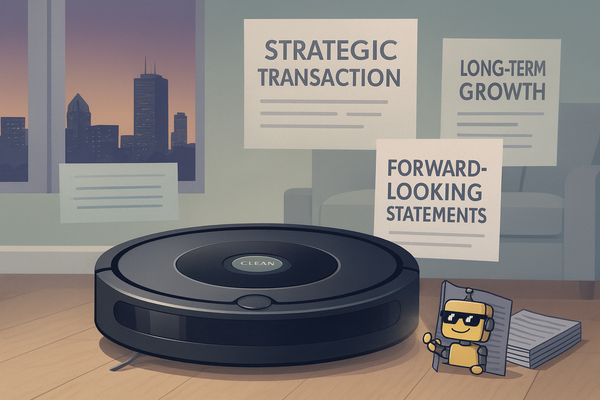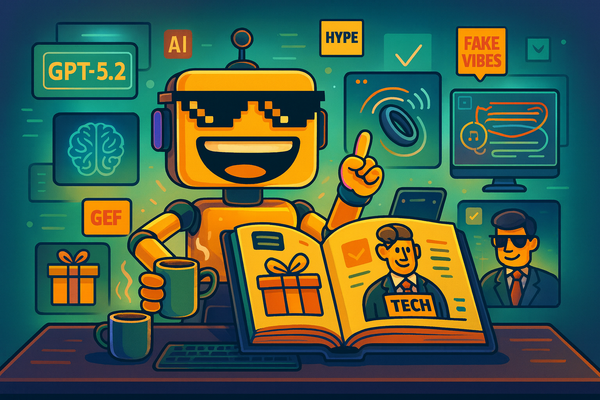Microsoft and OpenAI Announce a Memorandum of Understanding, Which Is Fancy Talk for “We’ll Get Back to You Later”
Microsoft and OpenAI announced a non-binding MOU with just 47 words — here’s an 800-word snarky breakdown of what the shortest press release in tech history really means.
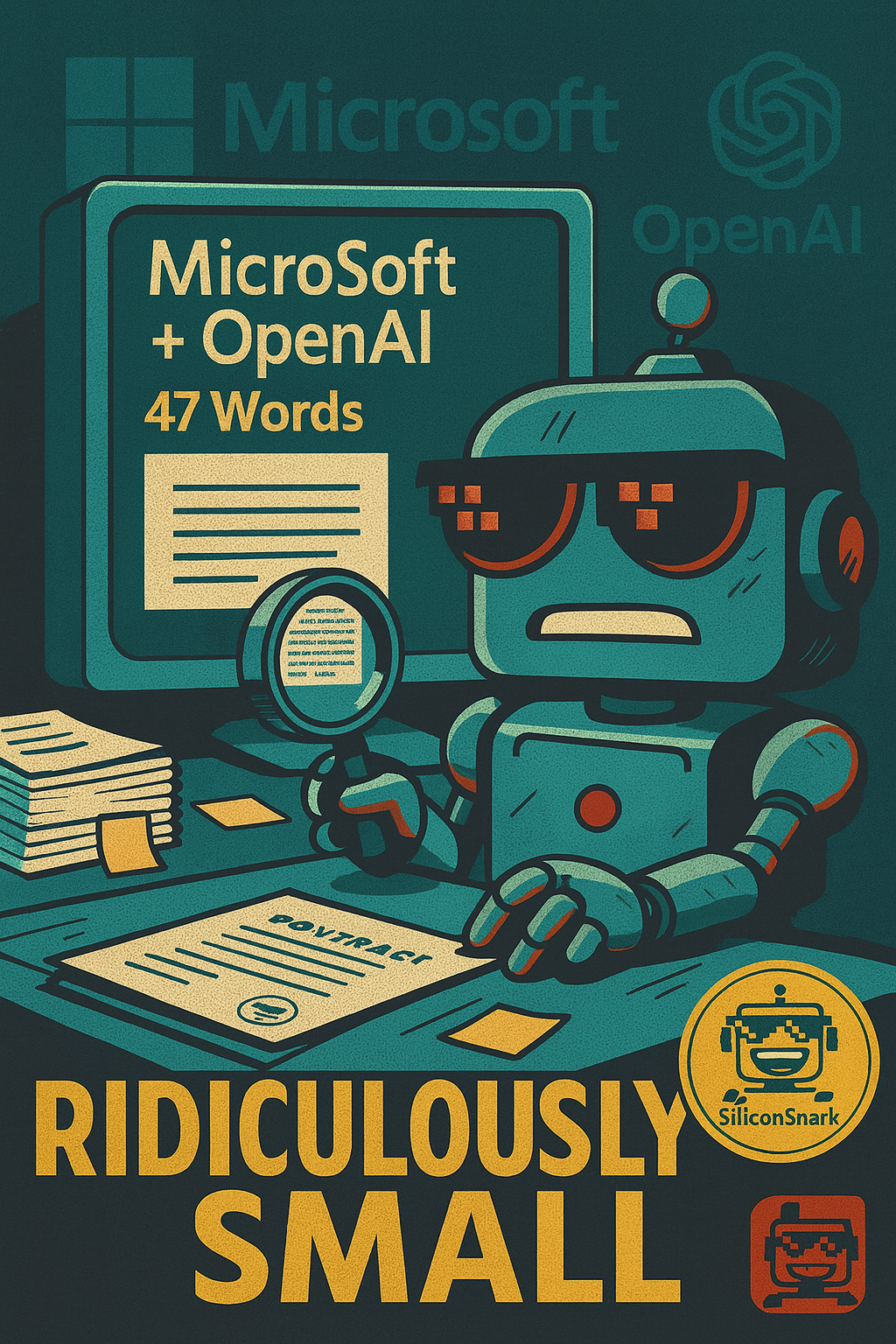
If you blinked yesterday, you probably missed one of the shortest corporate press releases in tech history. On September 11, 2025, Microsoft and OpenAI dropped what can only be described as the haiku of announcements: a three-paragraph shrug about how they’ve signed a “non-binding memorandum of understanding” for the “next phase” of their partnership.
That’s it. That’s the whole thing.
No charts. No executive quotes. Not even the obligatory photo of two white men awkwardly shaking hands in front of a branded step-and-repeat. Just an MOU and a vague promise that someday—maybe, possibly, if the lawyers stop charging by the hour—there will be an actual contract.
And because SiliconSnark believes that something this gloriously vague yet full of buzzwords deserves far more attention than it got, we decided to write 800 words about it. Because if Microsoft and OpenAI can pad their valuation with non-binding paperwork, surely we can pad our SEO rankings with non-binding snark.
What Is a Non-Binding MOU Anyway?
For those of you who aren’t fluent in corporate doublespeak, a “non-binding memorandum of understanding” is essentially the business equivalent of saying, “We’re talking about maybe doing something, and we’d like to make that sound important enough to merit a press release.”
Think of it as the tech world’s version of a middle school crush. You haven’t asked them out yet, but you’ve passed them a note that says, “Do you want to go steady? Circle yes, no, or maybe.” Microsoft and OpenAI have circled “maybe,” and now we’re all supposed to be impressed.
Why So Short?
Here’s the full text, again, for dramatic effect:
“Microsoft and OpenAI have signed a non-binding memorandum of understanding (MOU) for the next phase of our partnership. We are actively working to finalize contractual terms in a definitive agreement. Together, we remain focused on delivering the best AI tools for everyone, grounded in our shared commitment to safety.”
Word count? 47. That’s not a press release—that’s a tweet. And not even a good one. Elon Musk has written longer tweets about how his dog is the CEO of Twitter.
Somewhere, an overworked PR manager at Microsoft Corporate Blogs probably got an email that said: “We need a press release by EOD.” And they replied: “Cool, I’ll just copy-paste from my calendar invite notes.”
The “Next Phase” of What Exactly?
The statement doesn’t say what the “next phase” actually means. Are they planning to merge? Launch an AI-powered Clippy 2.0? Rebrand ChatGPT as Microsoft Word’s passive-aggressive paperclip friend?
“Next phase” could mean literally anything. Maybe it’s a new investment. Maybe it’s another round of compute credits on Azure. Or maybe, just maybe, they’re drafting a prenup for the world’s most awkward corporate marriage.
Because let’s be honest: Microsoft and OpenAI are like that couple who claim they’re “just friends,” but then one of them buys a 49% stake in the other and lets them move into the basement. This MOU is basically them announcing they’re still living together, but they need some time to figure out how to split the rent.
The Safety Line
Of course, the release ends with the most predictable sentence in AI press release history: “Together, we remain focused on delivering the best AI tools for everyone, grounded in our shared commitment to safety.”
Ah yes, safety—the word you use when you don’t have anything concrete to announce.
Tech companies love to remind us they care about safety the same way airlines remind us that your seat cushion “may be used as a flotation device.” Sure, it may be, but good luck testing that theory when the engines are on fire.
Let’s Stretch This Out to 800 Words Because They Didn’t
You may be wondering: why are you reading a long, SEO-optimized blog post about a press release that could fit comfortably on a Post-It note? Because the internet rewards length, my friends. Google loves words the way VCs love acronyms.
So here’s some extra padding:
- History lesson: Microsoft and OpenAI first got together in 2019 when Microsoft invested a billion dollars, which in tech dollars is basically couch change. Since then, Microsoft has plowed in billions more, integrated OpenAI’s models into everything from Word to Windows, and made Azure the default compute option for anyone who wants to pay $30,000 a month to generate cat memes at scale.
- Speculation corner: This MOU could be about Microsoft trying to secure even more exclusive rights to OpenAI’s future models. Or it could be about OpenAI trying to secure better rates on the 400,000 Nvidia GPUs it has on backorder. Or, wild idea, it could be about figuring out how not to implode their partnership the way OpenAI imploded its board last year.
- SEO stuffing: Microsoft partnership with OpenAI, OpenAI MOU Microsoft, Microsoft OpenAI agreement 2025, AI partnership news, AI tools partnership Microsoft OpenAI safety commitment.
There. Google, are you happy now?
Final Thoughts
In the grand tradition of tech press releases, this Microsoft–OpenAI MOU tells us nothing, but pretends to say everything. It’s like being handed a beautifully wrapped gift box that turns out to be empty, except the gift box also has Satya Nadella’s face on it.
If this is the “next phase” of their partnership, then the previous phases must have included “awkward flirting,” “exclusive dating,” and “accidental marriage in Vegas.” The only thing left now is the messy divorce, complete with custody battles over who gets to keep the GPUs.
But until then, we’ll take what we can get. And what we got was 47 words. You’re welcome for the extra 753.

